Honor Award
Hebil 157 Houses
Bodrum, Muğla, Turkey
CEVSA Landscape Firm & AYTAC Architects Istanbul, Turkey
Client: İnci –Enver AYTAC
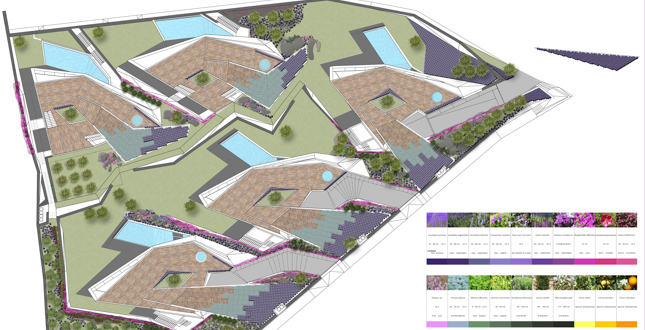
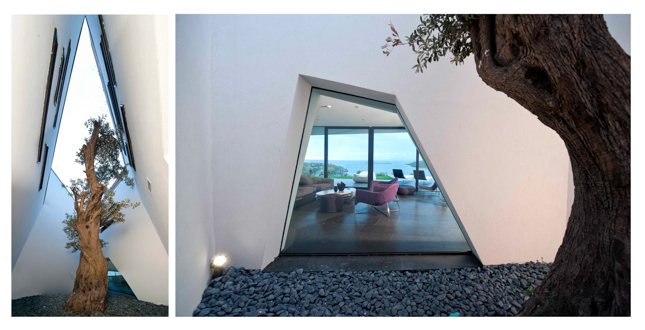 Close Me!
Close Me!Each building embraces the century old olive tree in the central courtyard and 10,000 lavenders attract native fauna.
Download Hi-Res ImageImage: Mehmet Okutan
Image 2 of 16
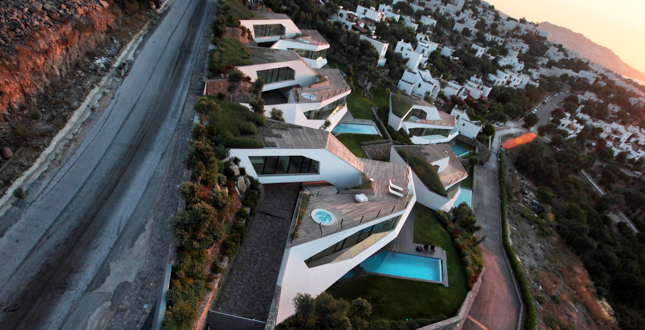
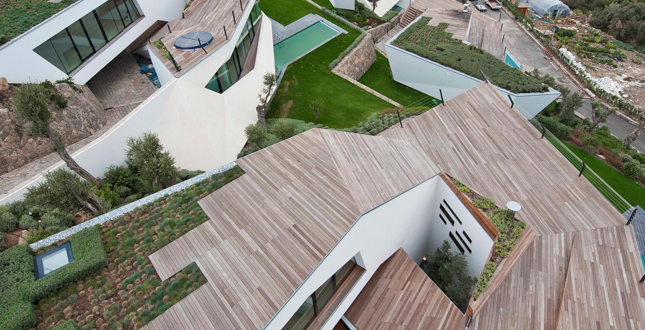
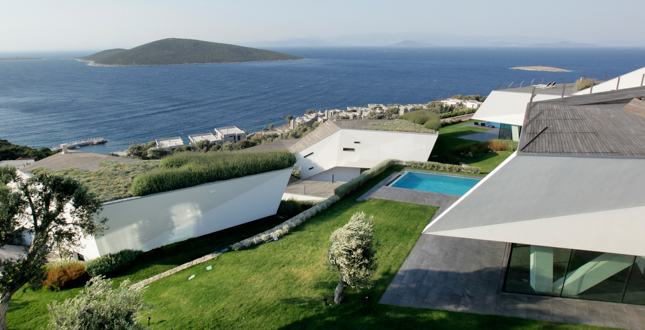
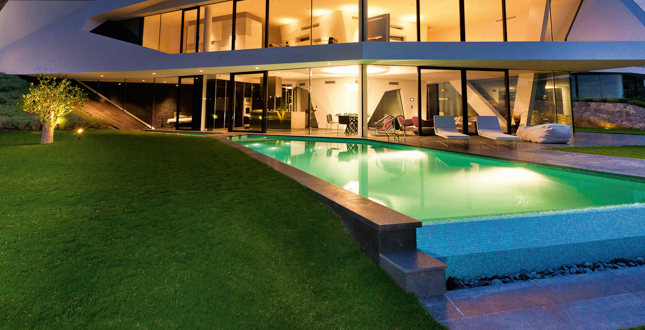 Close Me!
Close Me!The building with its pool and the terrace.
Download Hi-Res ImageImage: Mehmet Okutan
Image 6 of 16
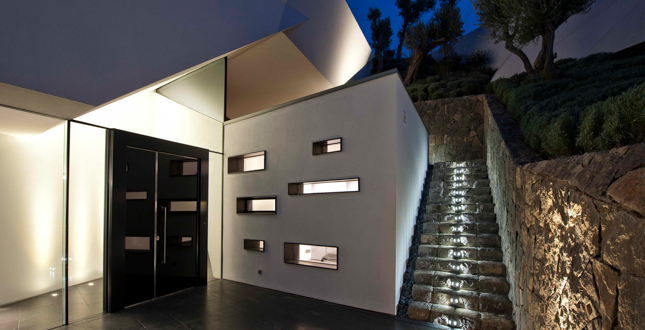 Close Me!
Close Me!Folded walls and the stairs in the night time.
Download Hi-Res ImageImage: Mehmet Okutan
Image 7 of 16
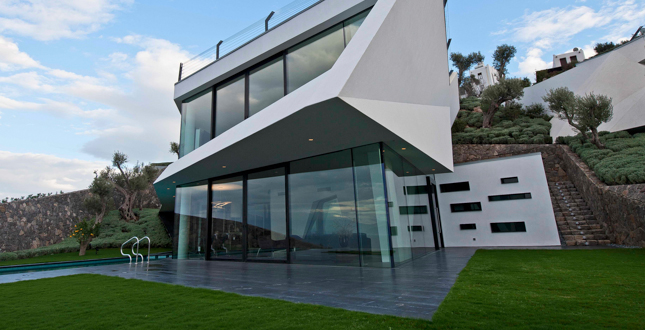 Close Me!
Close Me!Relaxing therapeutic environment, with lavender planting.
Download Hi-Res ImageImage: Mehmet Okutan
Image 8 of 16
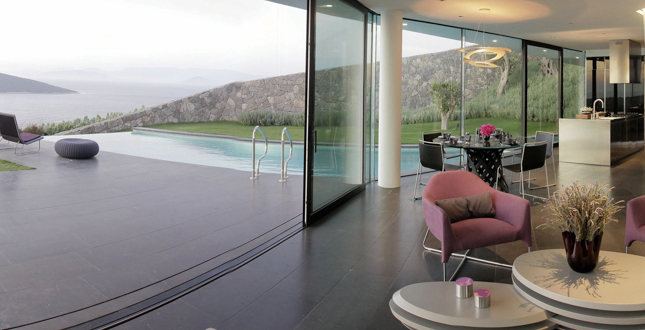 Close Me!
Close Me!From living room to the terrace, degradation of violet colors like lavenders, in the vases, on the sofas and chaise lounges.
Download Hi-Res ImageImage: Mehmet Okutan
Image 9 of 16
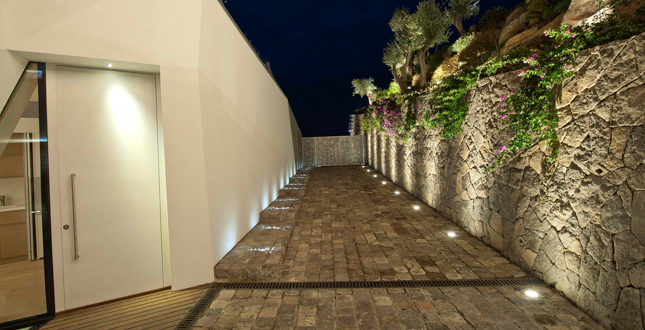 Close Me!
Close Me!Local volcanic agglomerate, the output of in-situ excavations has been used extensively.
Download Hi-Res ImageImage: Mehmet Okutan
Image 10 of 16
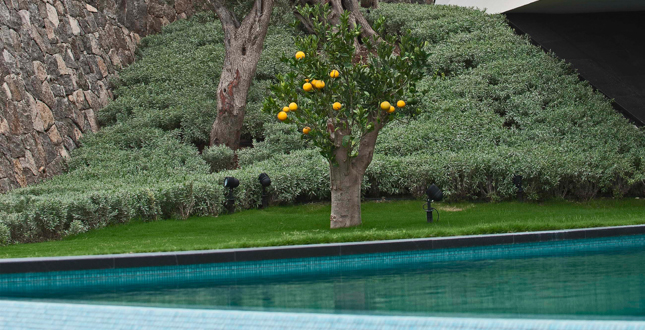 Close Me!
Close Me!Togetherness of the lavenders, olives and the mandarin tree.
Download Hi-Res ImageImage: Mehmet Okutan
Image 11 of 16
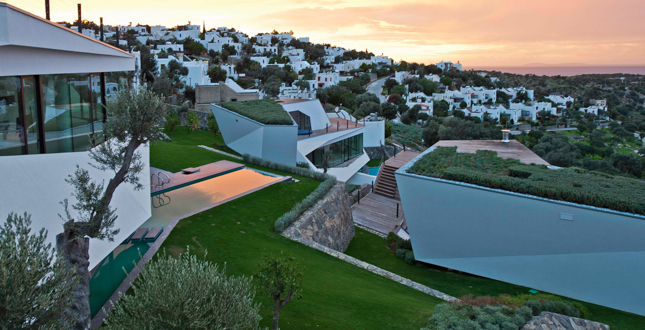
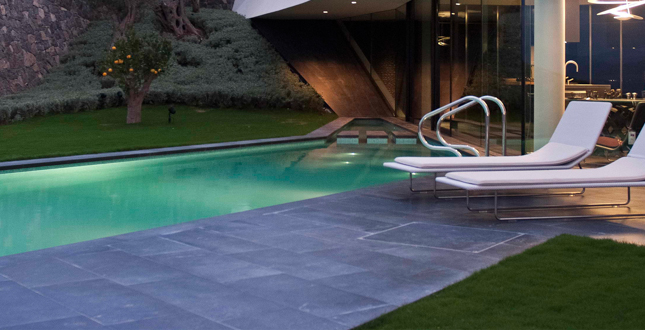 Close Me!
Close Me!Close to the kitchen, planted a Bodrum mandarin tree and murano glass mosaic paved pool.
Download Hi-Res ImageImage: Mehmet Okutan
Image 13 of 16
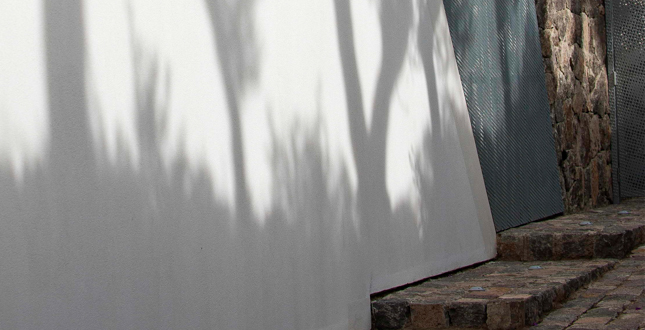 Close Me!
Close Me!Shadow of the olives on the white, perforated steel and stone walls.
Download Hi-Res ImageImage: Mehmet Okutan
Image 14 of 16
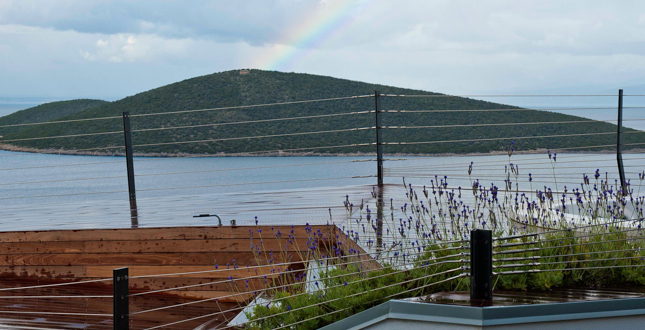 Close Me!
Close Me!Jacuzzi and the shower on the wood deck is surrounded by the lavenders and the Hebil Bay view.
Download Hi-Res ImageImage: Mehmet Okutan
Image 15 of 16
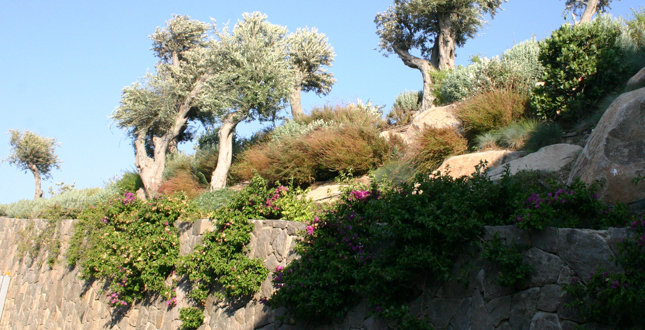
Project Statement
Hebil 157 Houses is a residential project consists of 5 luxury villas in Bodrum Peninsula, on the southwestern coast of Turkey. The buildings grow from the landscape and recall the crystalline lava flows of the legendry Volcano Kos once located near the Hebil 157 Site. Landscape design starts with the respect to the natural landscape, preserve the existing topography and the existing grove and reuse again, then continue the design with using the local flora. Consequently, this land turns into a paradise, using 10.000 lavenders and the butterflies flying on them.
Project Narrative
—2013 Professional Awards Jury
Project Background
Hebil 157 is a boutique development of five villas on a sloping five acre site north of Bodrum and set on the Aegean coast of south western Turkey. The site has views of northwards over Hebil Bay and the Aegean Sea. All this from a basaltic geology through which legendry Volcano Kos has erupted and produced lava flows and pyroclastic rocks. This rich geology is clothed with olive groves.
The setting is sublime and the views beautiful. So the first thing to ensure was to protect the topography, and place the villas with the landform and minimize grade change. This has ensured the retention of the surrounding olive groves.
Prior to construction began fifty olive trees, which would be affected by the new buildings, were identified, marked and prepared for removal and re-use and placed in an off-site holding nursery. Existing volcanic conglomerate stone field walls were surveyed and the buildings are located to retain these walls.
Architect Alper Aytac sees the design as an expression of the idea that 'Architecture as the extension of topography': The five villas are shaped and formed like the crystallized lava flows of the legendry Volcano Kos. Erupting out of the terrain dramatically, the vortexing “Bodrum White” masses merge into the background with serenity. The influence of the volcano is experienced both in materiality and spatial organization. The spaces are fluidly connected, rejecting compartmentalization.
The forms and flowing internal and external spaces provide privacy while ensuring views. Materials are the local stone, white rendered walls, wood decking and glazed panoramic windows. No stone other than volcanic basalt has been used in the interior spaces. For the external spaces and the stone screen walls, local volcanic agglomerate, the output of in-situ excavations has been used extensively. Large glass surfaces bring the picturesque landscape inside, blurring the division between inside and outside.
The buildings grow from the landscape and the roofs are partially vegetated. Each villa embraces the century old olive trees the central courtyard pays homage to the local flora. Each villa has a private terrace with replanted olive trees and a pool lined with Murano glass mosaic and the terraces are open to sea breezes. Close to each kitchen landscape architect has also planted a native Bodrum mandarin and other Citrus trees (Citrus reticulata, C. paradisi and C. lemon) for their fragrance and of course some Bay Laurel (Laurus nobilis). Slopes offered rock gardens and planted with native drought and salt tolerant grasses and herbaceous plantings (such as Thymus and Salvia), and use of lavender (Lavandula pinnata, L. angustifolia, and L dentata) in mass planting. These areas has become attractive points for the fauna. In the project, color transition from the variations of the violet to pink is the most memorable element during the summer and early fall time. Color is found in the flowers of lavenders and in the flowers of herbaceous plants. These colours are then reflected in the interior furnishings and the applied mosaics in the villas.
The project investigates the rich relationship between the dynamic and complex forces of nature, and aim to work with them to produce relaxing therapeutic environment in touch with the natural landscape. The development is a product of a husband and wife team of architect and landscape architect.
Project Resources
Design & Construction Team
Lead Designer
Ahmet Cengiz Yildizci, Int'l ASLA, CEVSA Landscape Firm
Gulsen Aytac, CEVSA Landscape Firm & ITU Collaboration
Landscape Architect of Record
CEVSA Landscape Firm
Architect
Alper Aytac
Aytac Architects
Featured Products
Plants and soil
Local nurseries and villages
Hardscape
Local volcanic agglomerate
Lighting
Jacuzzi
Shower Armature
Chaise Lounges
Swimming Pool
Walls
Local volcanic agglomerate
Doors
Perforated steel with wall's stone texture
Irrigation
Decking
Green Roofs




